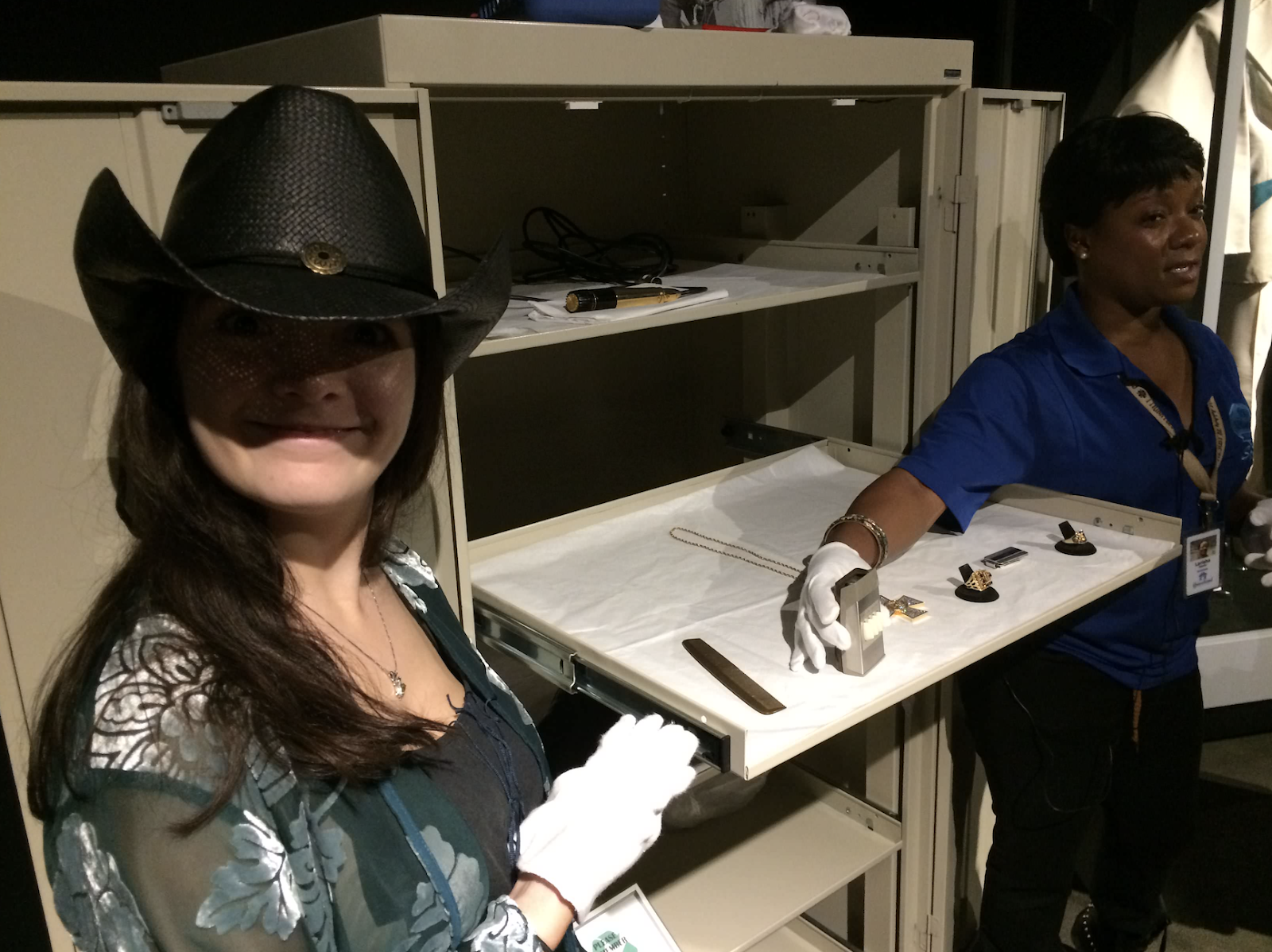Elvis Lives
Another aspect of Classen and touch that I want to “touch” upon besides what I mentioned in our group presentation (the necessity of touch through Harlow’s monkey experiment and how fun games are when we include touch and not sight) is the noticeable omission of tactile experiences in museums. Exploring history through touch makes the past come alive.
While reading, I was reminded of when my family visited Graceland and went to the Elvis Presley museum. Part of the VIP tour included holding Elvis’ microphone, jewelry, etc., and this is so important, not only for die-hard Elvis fans, but for everyone to experience because “when we allow historical figures to be of flesh and blood, we make it possible to relate to them as fellow beings and, therefore, to make meaningful comparisons between their lives and situations and our own.” I believe touch is one of the best ways that we can understand the past, and it should be implemented in history lessons more.

(Pictured here is my sister about to touch (gloved) some of Elvis' jewelry, his comb, microphone, etc)
In the chapter on Tactile Arts, Classen wrote: “Visitors not only touched objects in museums to verify their true nature, they touched them because they wanted to experience them intimately. Sight requires distance to function properly, detaching the observer from the observed. Touch, by contrast, annihilates distance and physically unites the toucher and the touched. Handling museum artifacts gave visitors the satisfaction of an intimate encounter. In the case of human-made artifacts, it also provided the thrill of coming into vicarious contact with their original creators and users, and even— through, for example, hefting a sword or trying on a ring— a sense of what it would be like to be an artifact’s original owner…Here the sense of touch is essential to the visitor’s experience of a museum collection, not because it provides her with an empirical knowledge of the artifacts’ physical qualities, but because it enables her to establish an imaginative intimacy with storied ancient peoples…The sense of touch is perceived as annihilating both space and time. This oft-perceived ability of touch to bridge space and time gave it a special value in the museum setting, where visitors were separated by considerable spatial or temporal distances from the cultures of origin of many of the objects displayed” (141-142).
Classen describes an extremely important advantage of touch in museums that I had not considered before taking this course: its ability to access interior truths of which sight was unaware. This makes me want to pay for those VIP experiences at museums more or seek the museums that have more holistic sensual activities, such as at the Titanic museum, where you can touch water and ice that is as cold as it was when the ship sank in the North Atlantic Ocean. We often hear the phrase “seeing is believing,” but I am starting to think that “touching is believing” because it is the deepest sense.
.jpg)


Comments
Post a Comment